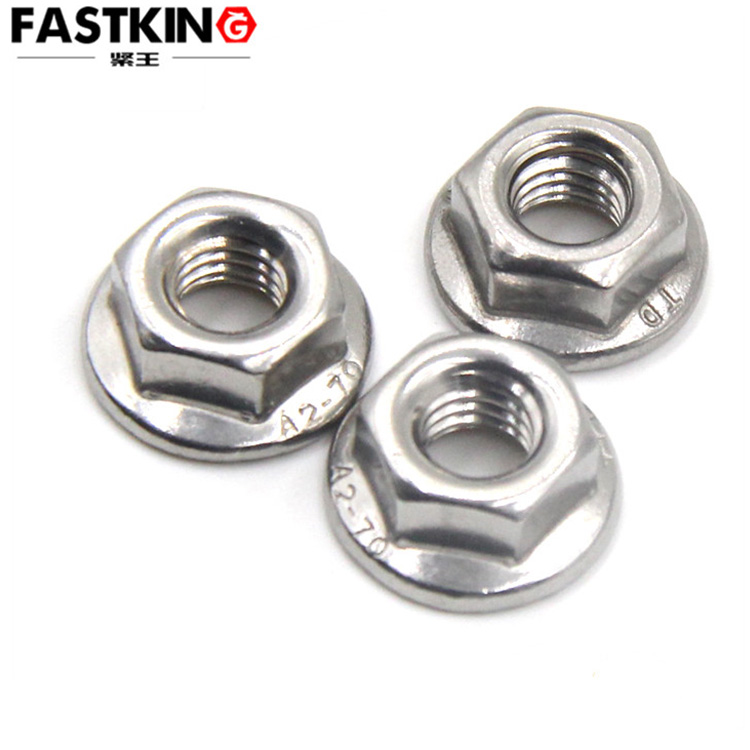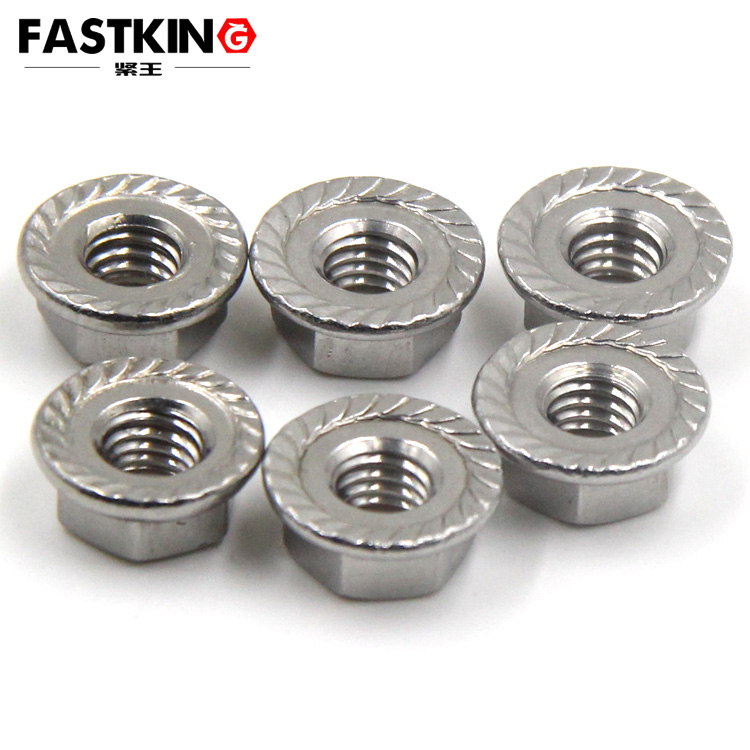Hex Flange Nuts: A High-Strength, Anti-Loosening Fastening Solution
Introduction
Hex flange nuts are innovative fasteners that combine the reliability of traditional hex nuts with the anti-loosening advantages of a flanged surface. Widely used in automotive manufacturing, construction machinery, steel structures, and other fields, these nuts achieve a perfect combination of high-strength connections and reliable anti-loosening performance through their unique design.
Core Advantages of Hex Flange Nuts

Hex flange nuts are manufactured from high-quality carbon steel or alloy steel, undergoing heat treatment and surface finishing processes to achieve excellent mechanical properties and corrosion resistance. With a hardness of HRC28-32, they offer sufficient strength and appropriate toughness. The integrated flange design provides a larger contact area, effectively distributing the fastening pressure and preventing loosening.
In terms of mechanical performance, hex flange nuts support a maximum strength grade of 10, meeting the fastening requirements of most high-demand applications. The flange surface is typically designed with anti-slip serrations, providing additional anti-loosening performance and vibration resistance 3-5 times higher than that of ordinary nuts.
These nuts feature a standard hexagonal shape, allowing for easy operation with a common wrench. The unique flange design not only enhances anti-loosening performance but also protects the surface of the fastened parts. Standardized thread specifications and dimensions ensure good interchangeability and compatibility.

Proper Use of Hex Flange Nuts
When installing hex flange nuts, ensure that the threads are clean and undamaged. Use an appropriate wrench for installation, avoiding excessive pre-tightening force. Pay attention to the nut orientation, ensuring the flange faces the fastened part. During tightening, follow the specified torque values to prevent over-tightening, which could lead to flange deformation.
For routine maintenance, regularly inspect the nut's fastening status and retighten if necessary. Check the threads and flange surface for any damage, and replace the nut promptly if any issues are found. When storing, keep the nuts in a dry, ventilated area, avoiding direct sunlight and chemical corrosion.
Common issues include flange deformation and thread damage. These can be identified by visual inspection and checking the fastening status. Damaged nuts should be replaced promptly to avoid compromising structural safety.
Typical Applications of Hex Flange Nuts

In the automotive manufacturing sector, hex flange nuts are widely used for fastening critical components such as engines, chassis, and suspension systems. Their reliable anti-loosening performance ensures driving safety. In construction machinery, they are commonly used for connections in hydraulic systems, transmission systems, and working devices, meeting the demands of high-intensity vibration environments.
In steel structure systems, hex flange nuts are used for connections in bridges, buildings, and towers. Their high strength and anti-loosening performance ensure structural safety. In the rail transit field, they are applied in fastening components such as bogies, car body connections, and signaling equipment, providing reliable support for train operations.
Conclusion
Hex flange nuts have become a benchmark in the field of high-strength, anti-loosening fastening due to their outstanding performance and broad applicability. As advanced manufacturing continues to evolve, hex flange nuts will continue to play a crucial role in emerging fields such as new energy vehicles and heavy equipment, providing a solid guarantee for reliable connections.
